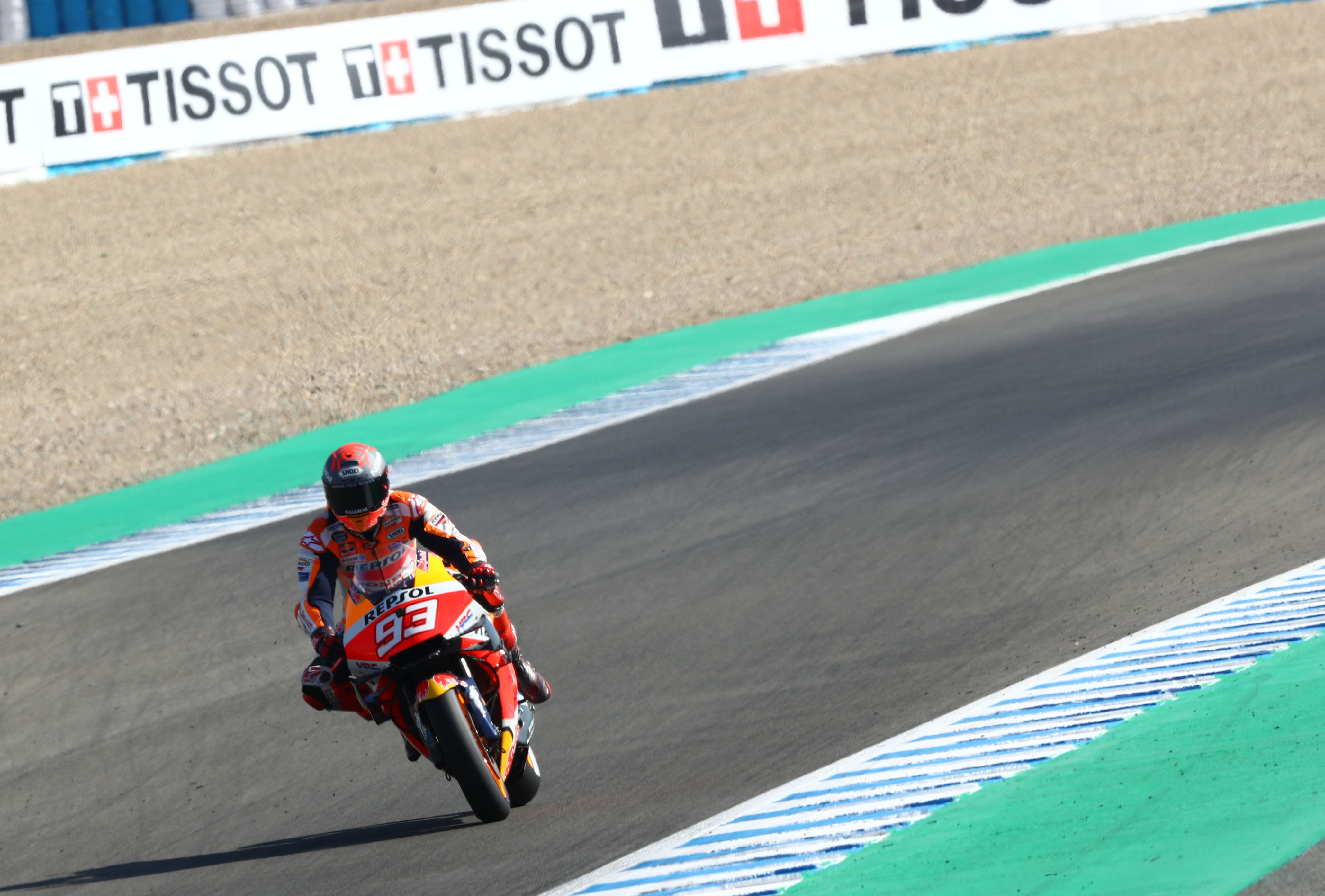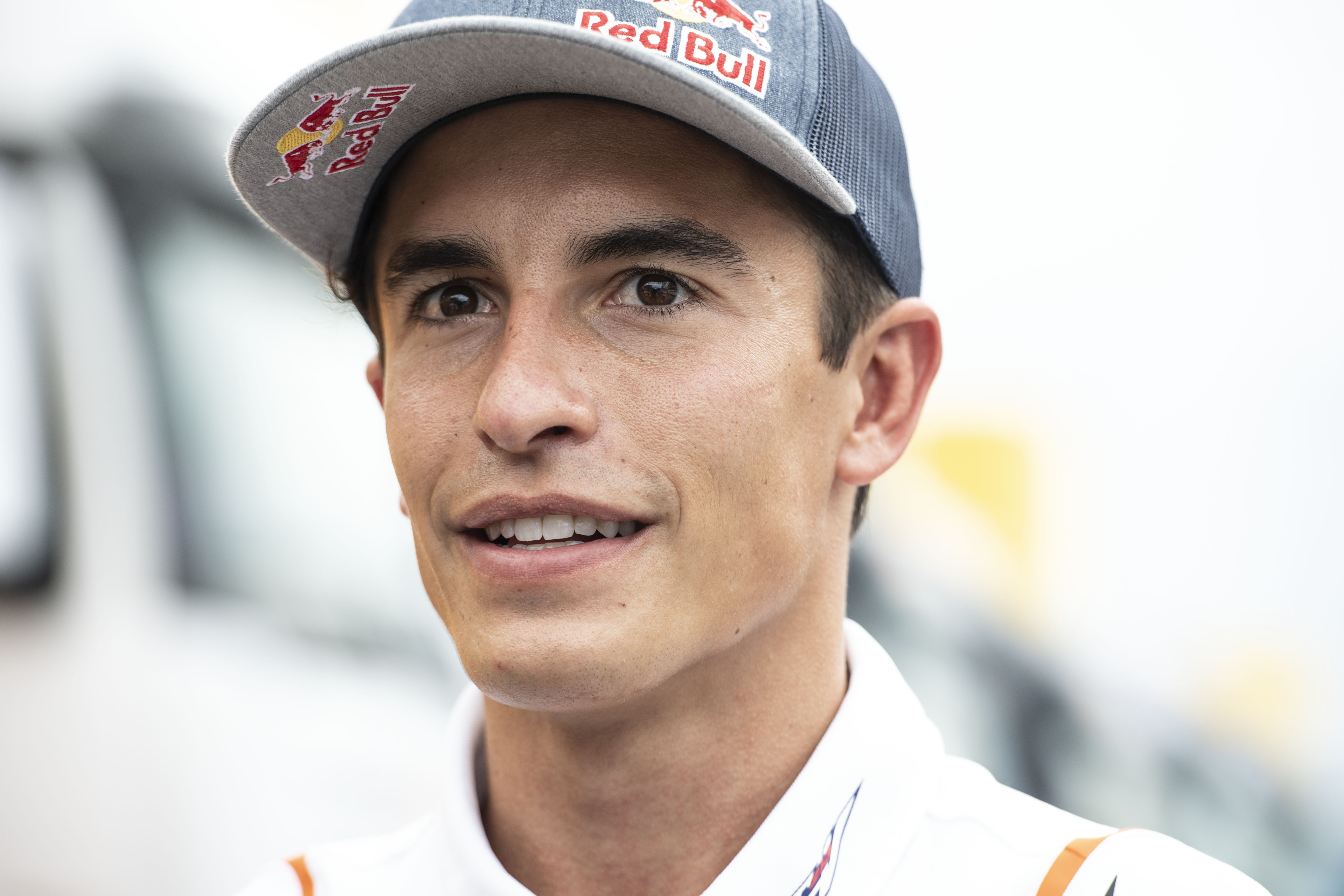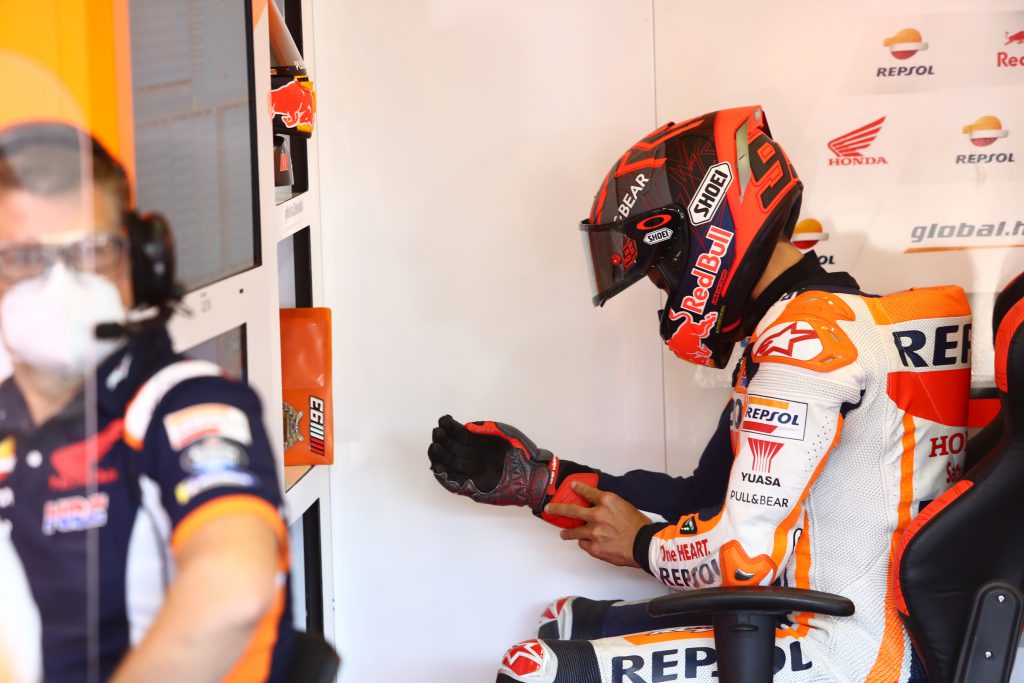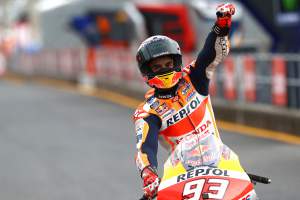Honda has confirmed that Marc Marquez has undergone a third surgery on his broken right arm in an eight-hour procedure at Madrid’s Hospital Ruber Internacional.
Motocyclismo reported earlier on Thursday that Marquez visited Madrid’s Ruber Internacional Hospital initially to decide on his course of action.
The surgery that Marquez received in Madrid was a bone graft from his pelvis into his right humerus as well as a replacement of the titanium plate fitted back in July.
That news confirmed what was first reported by The Race just over three weeks ago, and a decision this week would have fit with the timeline originally reported on when he would need to make a call on the next steps in his recovery.
According to The Race’s sources, Marquez’s right humerus bone has been left in a considerably worse state than anticipated
The Honda rider badly broke his right arm at the season-opening Spanish Grand Prix at Jerez in late July, necessitating surgery to install a first titanium plate onto the humerus bone.
Subsequently attempting a return to action only five days later, he stressed the injury to the point of significantly aggravating it, prompting a second surgery and extending the timeline for his return into months rather than days.
That’s because, according to The Race’s sources, his right humerus bone has been left in a considerably worse state than anticipated after two operations to install supportive metal plates.
With each requiring numerous holes to be drilled into his arm, the bone is understood to have been structurally compromised by the repeated surgeries.
According to a medical expert familiar with motorcycle racing injuries who was consulted by The Race, the scenario Marquez is facing could be a nonunion of the break in his arm, a condition that arises when a broken bone is unable to fully heal without surgical intervention.

“The humerus is biomechanically very stressed in rotation, and a motorcycle rider is exposed to these stresses,” the source explained.
“A humeral fracture can be further stressed by these forces, and must be well balanced by excellent mechanical stability when a plate is installed.
“Double surgical exposure may have slowed the formation of calluses for humeral mechanical healing, and if bone healing is not occurring, the racer may experience pain when moving their elbow. If the callus is insufficient, the clinical and radiographic diagnosis is classified as humeral nonunion.
“At this point, in addition to inserting a new plate, it is necessary to reinforce the humerus with bone marrow taken from the iliac crest with growth factors from the blood, to help the biology of the fractured bone to heal.”
Marquez is now facing a significantly longer period of recuperation than initially predicted by his team.

It’s likely that he will have been prescribed at least 12 weeks of limited movement with the arm before beginning an extensive period of rehabilitation and physiotherapy.
With the opening round of the 2021 MotoGP season now only 16 weeks away (and the first test of the year five weeks before then) Marquez will face a race against time to be fully fit in time to attempt to reclaim the title that Suzuki rider Joan Mir took from him.
The news that Marquez’s procedure was performed at Madrid’s Ruber Internacional Hospital instead of his usual treatment centre at Barcelona’s Dexeus University Hospital is also significant.
He’s reportedly deeply unhappy with the medical advice given by Dr Xavier Mir, who performed the original operation and who remains a key member of MotoGP’s medical team.
That tallies with rumours in the paddock that Marquez had sought advice from a number of specialists outside Spain, including at Red Bull’s sports medicine centre in Austria and at the USA’s prestigious Mayo Clinic.






